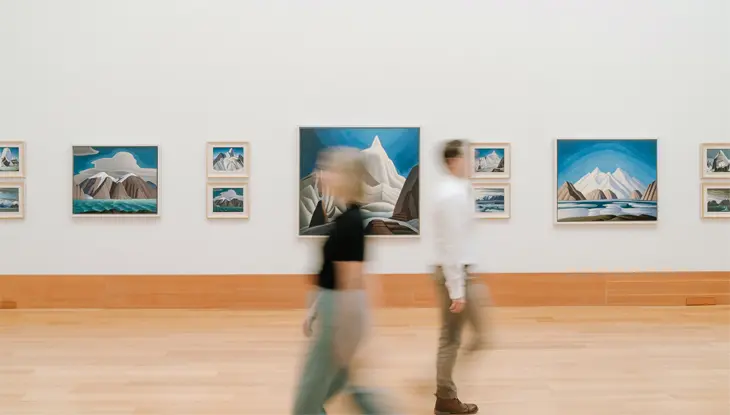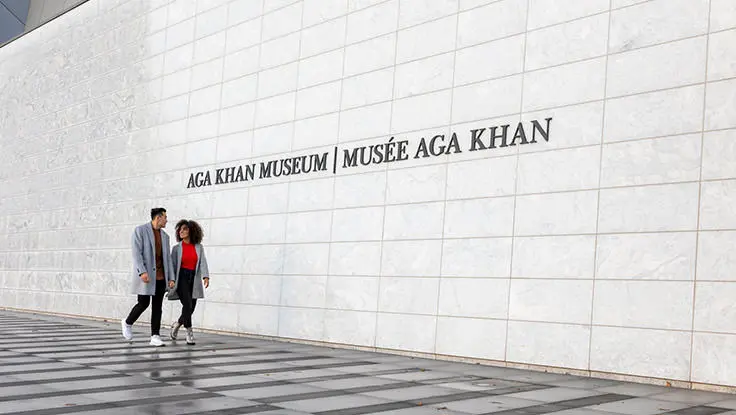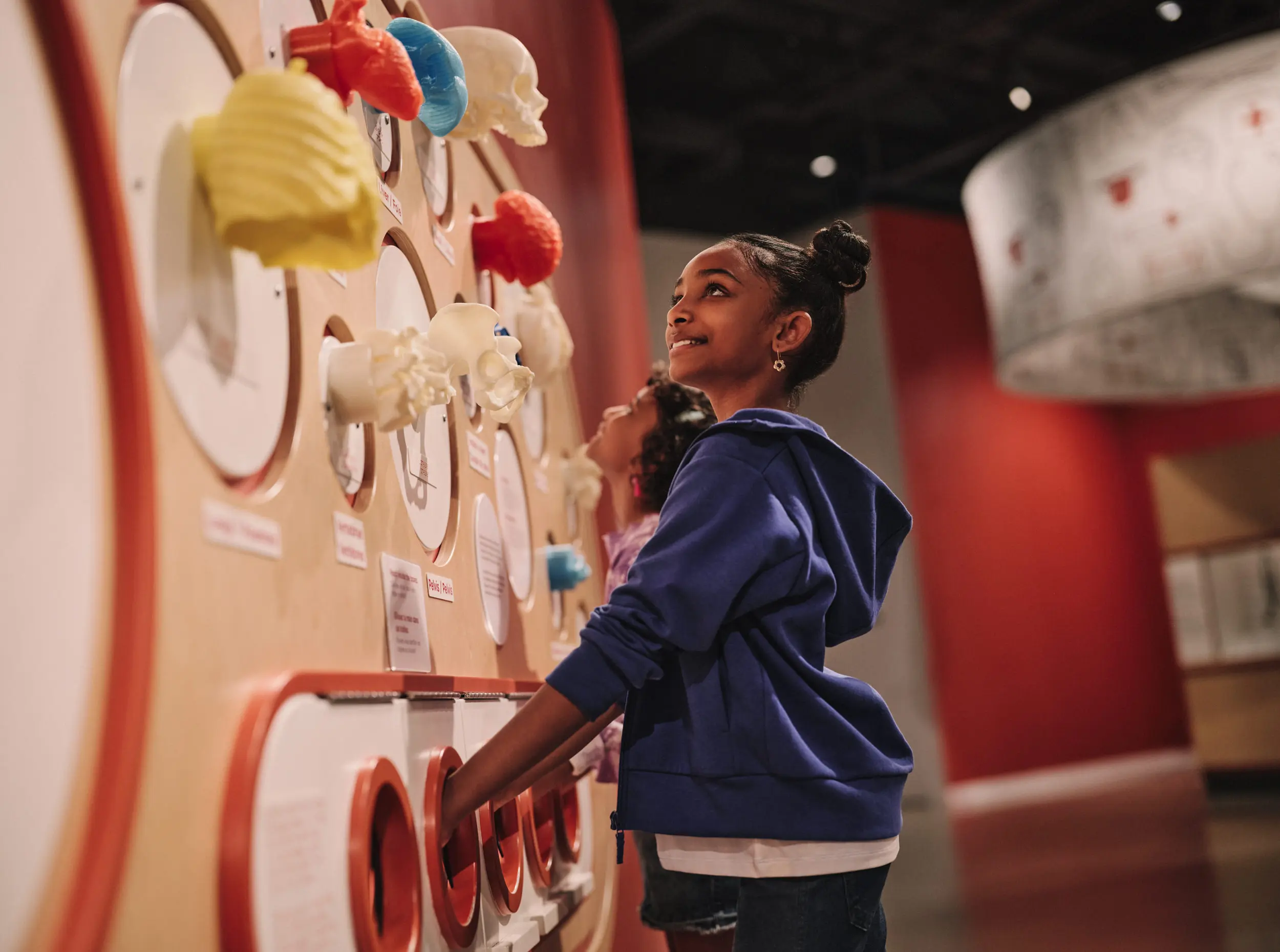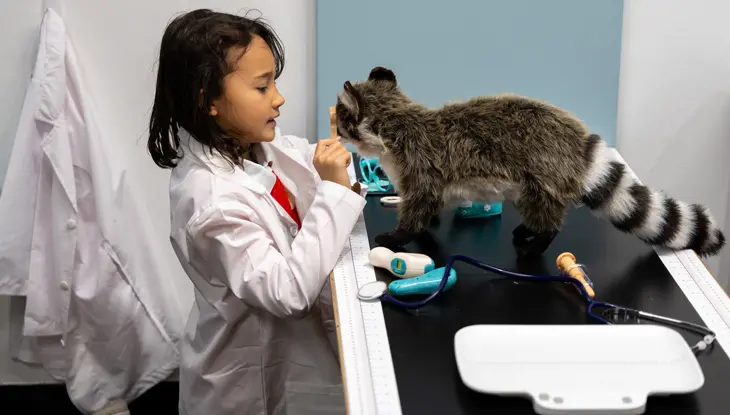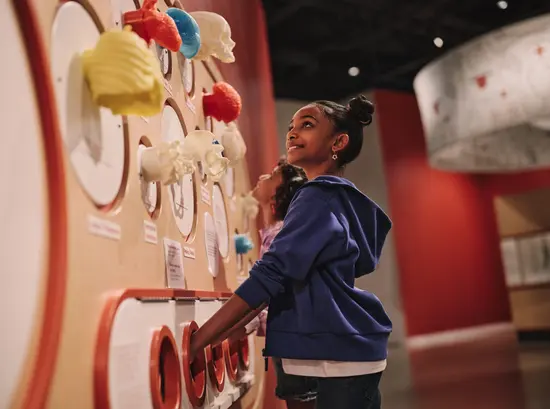Royal Ontario Museum
Opened in 1914, ROM (Royal Ontario Museum) showcases art, culture and nature from around the world and across the ages. Today, ROM houses more than 18 million objects, ranging from Egyptian mummies to contemporary sculpture, from meteorites to dinosaur fossils. ROM is the most visited museum in Canada, attracting over one million visitors each year.
The Museum features a world-class collection of artworks, objects and specimens, featured in 40 gallery and exhibition spaces. You’ll find iconic historical artifacts, major Art Deco works and the world’s most extensive collection of fossils from the Burgess Shale. Plus, ROM hosts some of the world’s best exhibitions.
Royal Ontario Museum
How to get to Royal Ontario Museum
Location: 100 Queens Park, Toronto
By transit: Get subway, bus and GO Transit directions to the ROM.
By car: Limited paid parking is available near the ROM, including in Yorkville Village and the Cumberland Parkade.
Know before you go
Save on admission to the ROM and other city attractions by purchasing a Toronto CityPASS.
With the ROM’s Plan Ahead Pricing, you can book a spot to visit on the day you choose. The further ahead you buy your ROM tickets, the more you’ll save.
Things to do at Royal Ontario Museum
Discover more activities and experiences.
Shop at the ROM Boutique
Browse through a diverse selection of local, international and artisanal products at the ROM Boutique. Many are themed around the ROM’s exhibitions and galleries.
Plan a family trip
Step into WonderWorks, the ROM’s play-based learning space for young children. With engaging props and prompts, kids of all ages will love learning in a fun, interactive environment.
Immerse yourself in history
Kids and adults alike will enjoy hands-on exhibits at the ROM. Explore 3,000 minerals and meteorites, interact with 800 bat models in the bat cave and touch a shark jaw and snakeskin.
Explore the museum after dark
Adults can participate in ROM After Dark. Held once a month, this unique experience offers curated music, pop-up performances and theme-inspired snacks for an exciting night out.
Articles and itineraries
Get ideas and inspiration for your next trip.

Interesting facts about the Royal Ontario Museum
The original ROM building is a mix of Neo-Romanesque and Italianate styles with rounded arched windows, decorative brackets under the roof and other aesthetic details. The eastern wing has elaborate Art Deco designs inspired by Byzantine-era architecture.
A notable expansion is the modern Michael Lee-Chin Crystal. Considered one of the most challenging construction projects in North America for its engineering complexity, the Lee-Chin Crystal is composed of five interlocking prism-like structures that coexist with the original ROM building.
Accessibility Features
Learn more about the accessibility features available at the Royal Ontario Museum.
Accessible drop off location
A designated and signed area used for loading and unloading passengers into or out of a waiting vehicle. A passenger drop-off/pick-up area typically should include a driveway, a lay-by for the stopped vehicle close to an accessible entrance and an accessible route from the drop-off/pick-up area to the main entrance. It is important that any drop-off locations are clear of snow and ice or other obstructions.
Accessible restaurant
Designed to be accessible to persons with varying disabilities, including those using mobility aids. They include an accessible entrance, adequate maneuvering space, nearby accessible washrooms, tables with removable chairs and sufficient knee clearance, menus in alternate formats, and cafeteria or buffet counters that are reachable for mobility device users.
Accessible seating
For persons using mobility aids, accessible seating is available in all areas or levels for persons using mobility aids. The path to the accessible seating should be barrier-free so a person using a mobility device can access it. Reserved space with a clear view of the event/activity for someone who is seated, good sound quality and adequate maneuvering room for a mobility device.
Automatic doors
Main entrance doors and other accessible entrances and exits are power assisted to allow easy access.
Elevator access
Elevators should be designed to be usable independently by and accessible to persons using wheelchairs, scooters, walkers, canes or crutches, to enter and exit all public facilities. Controls/buttons should include tactile information to ensure easy use by persons who have visual limitations. Controls/buttons should be easy to reach and push, be raised and require minimal strength to activate.
Ramps
An inclined plane that allows wheelchair users and others to access buildings and navigate between different levels.
Stair chair lift
A motorized chair that moves along a rail attached to stairs to help people get up and down them. They are often used by people who have limited mobility, such as older individuals, people with disabilities or those who are recovering from an injury.
Wide doorways and hallways
A sufficiently wide, hard-surfaced, unobstructed path to allow for easy travel.
Accessible washroom
At least one washroom stall larger than the others to accommodate adequate maneuvering space for mobility devices. They also include grab bars, transfer space, an accessible door latch, sink with knee clearance, and lever handles or automatic sensor faucets.
Universal washroom
A separate washroom that allows an individual in a wheelchair to use a self-contained washroom facility. They include grab bars, transfer space, an accessible door handle/lock, accessible sink with knee clearance, easy-to-use/automatic faucets, adult change table and emergency call systems. It is also universal, allowing people of any gender to use it comfortably, including with a support person if needed.
Assistive listening devices available
Assistive listening devices are available for rent or free of charge. You can select this feature if you offer assistive listening devices to help people with hearing loss better hear a performance or event. These devices can include frequency modulation (FM) systems, infrared systems and audio induction loop systems. It is important to check the devices periodically to ensure that they are in good working order (i.e., working batteries and not in need of maintenance).
Information available in alternative format
Alternative formats present information beyond standard text, such as electronic text, audio, captioning and Braille. Accessible formats are available for menus, brochures, maps, signage or websites. Communication support must be provided in a timely manner upon request, at no extra charge, in consultation with the person making the request.
Service animals welcome
Can be identified by visual indicators (such as a vest or harness) or documentation from a regulated health professional confirming the animal is necessary due to a disability. In Ontario, service animals are allowed in all public spaces unless otherwise prohibited by law. A service animal is not a pet; it is trained to perform tasks to assist a person with a disability, such as guiding individuals with vision impairments, alerting to sounds for those with hearing impairments, assisting during seizures, retrieving items, or helping manage psychiatric and neurological disabilities. There are no restrictions on the type of animal used as a service animal in Ontario. If the animal is not easily identifiable, the person can provide documentation from a regulated health professional confirming the need for the service animal.
Support persons welcome
By law, you must allow a person with a disability to be accompanied by his or her support person while in the areas of your business that are open to the public. A support person is an individual hired or chosen by a person with a disability to provide services or assistance with communication, mobility, personal care, medical needs or with accessing goods, services or facilities. If you charge an admission fee at your business, you must let people know you charge an additional fee for a support person.
Wheelchair and/or mobility devices available
Mobility devices such as wheelchairs, walkers, canes or mobility scooters are available for people to borrow or rent at the business. If you make wheelchairs or assistive devices available to the public, it is important to make sure that they are properly maintained and periodically serviced so they are in good working order and do not present a safety risk.
Last updated: December 1, 2025

